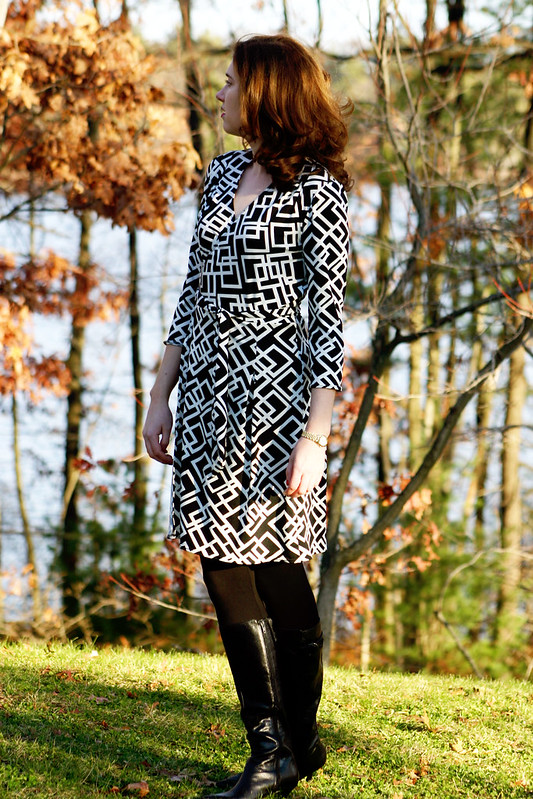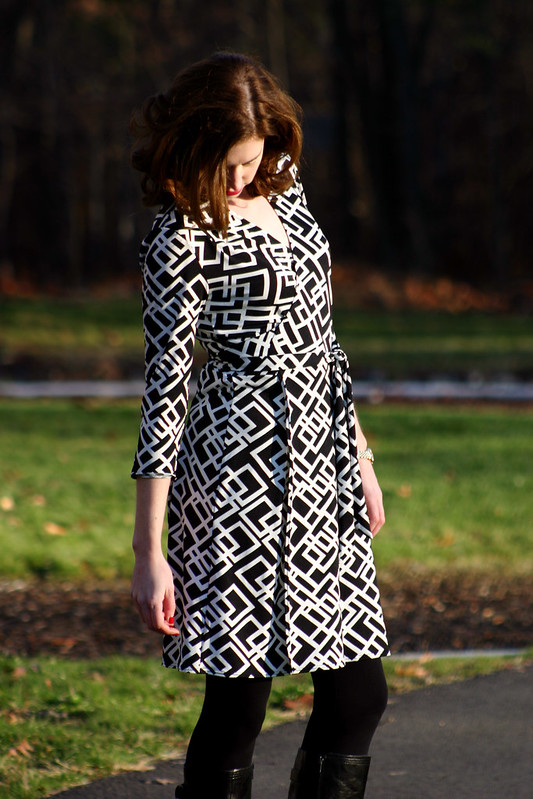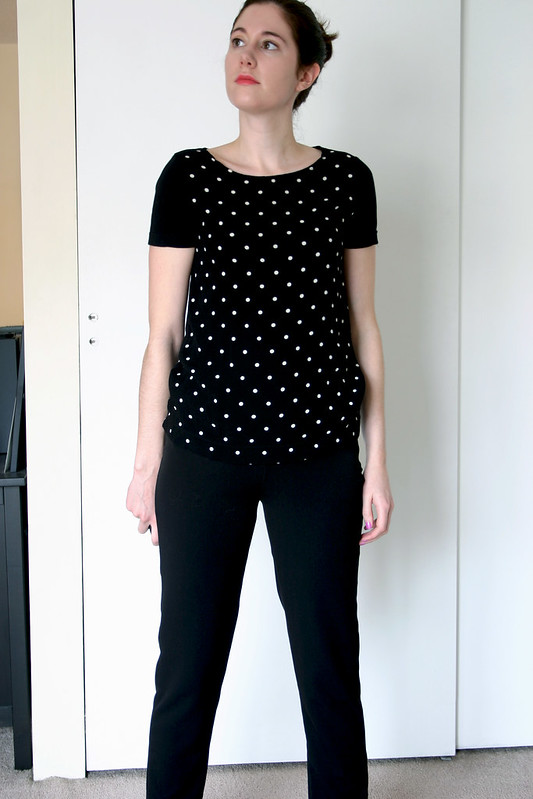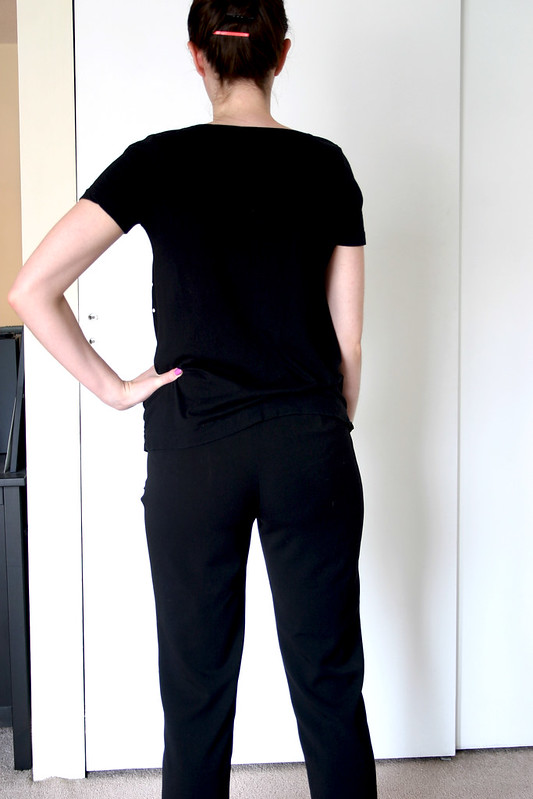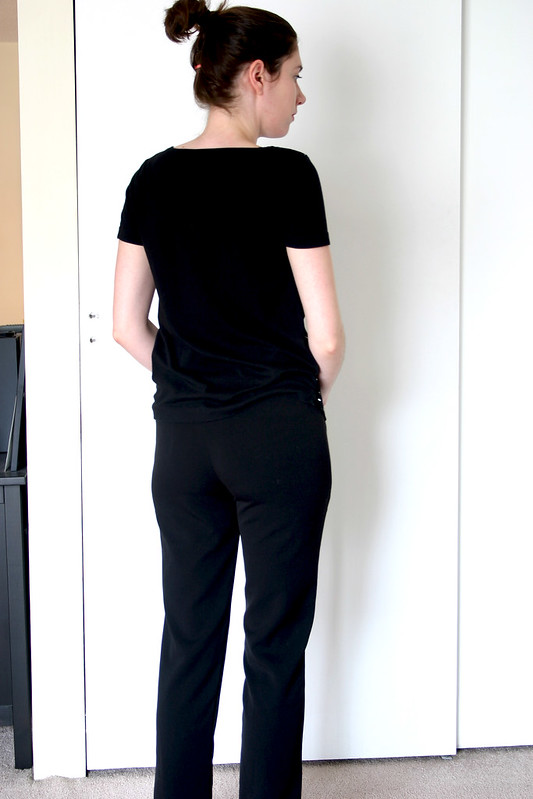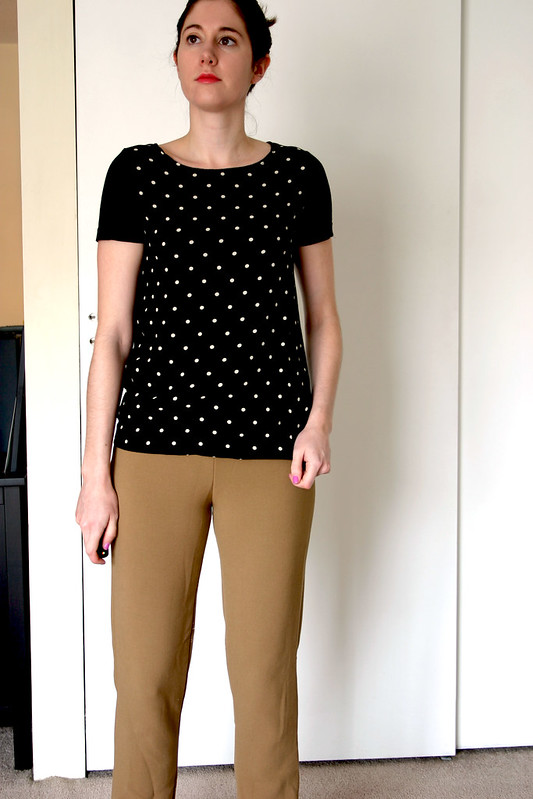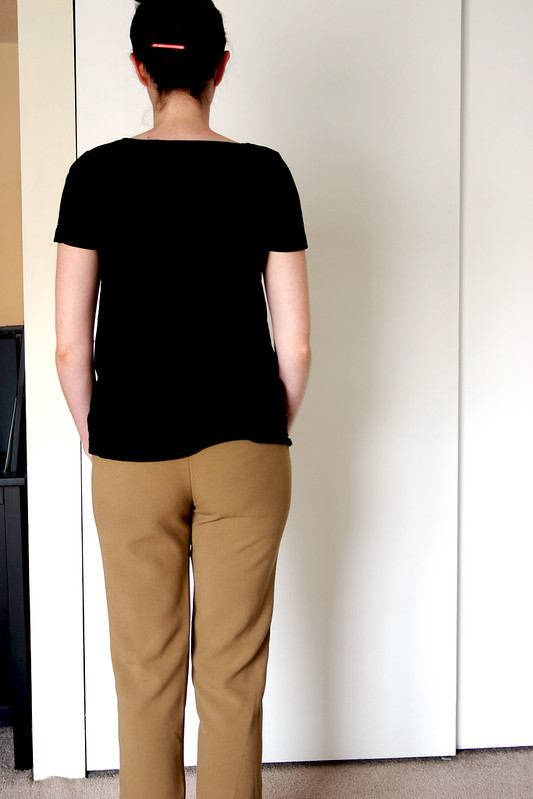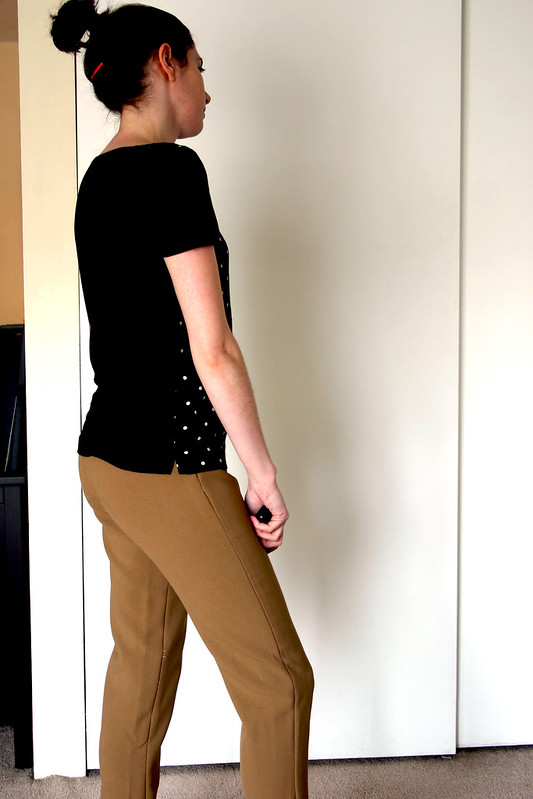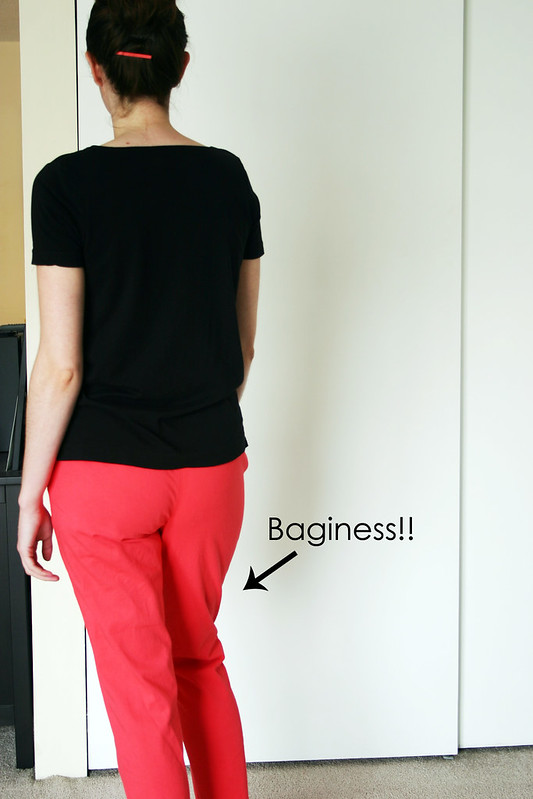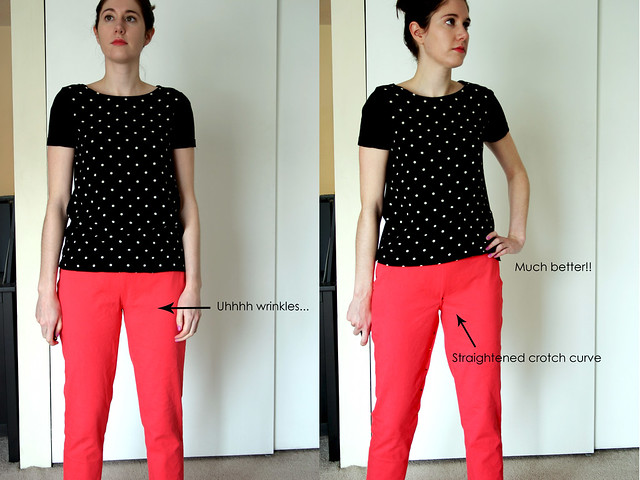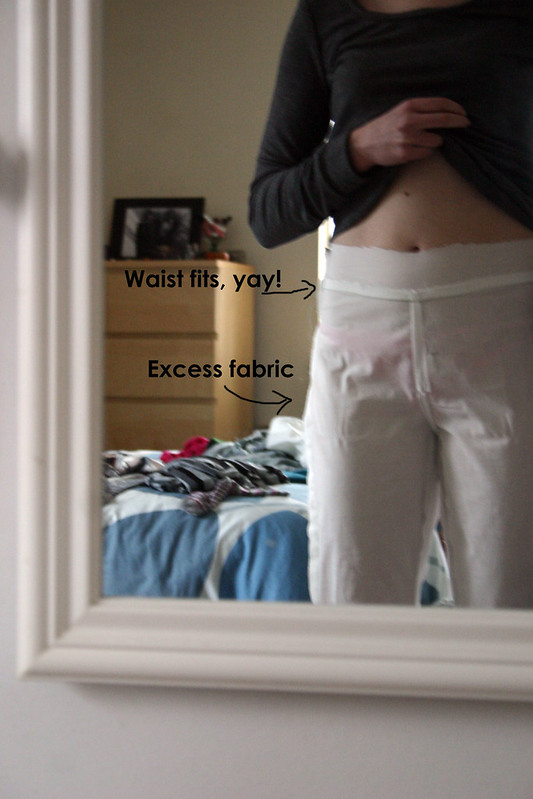
Hey hey, I had success with my Yona “muslin!” On the day after my failed attempt at fitting Vogue 1365, I went out to pick up some more muslin fabric so I could try out the Yona pattern, but the idea hit me to try to make it out of some legit Malden Mills Polartec fleece I spotted at Fabric Place Basement. It was so nice and soft, came in a heavier weight suitable for outwear (300 weight), and I thought it would closely emulate how the layers of my wool, interfacing, interlining, and lining would behave. Plus, it would end up being a “wearable” muslin – what a nicer alternative to wearing my big red bathrobe to stay warm in my apartment! A stylish house coat that I wouldn’t be embarrassed to be seen in when the FedEx guy drops off my boxes…whoops!
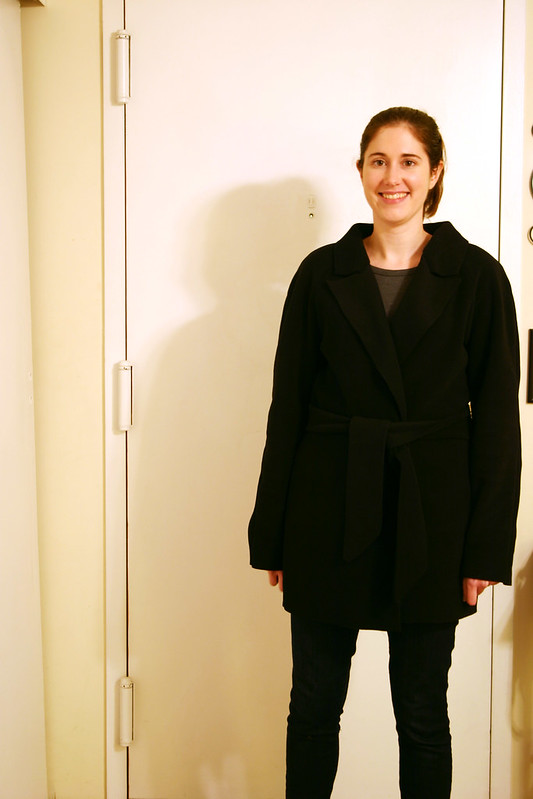
So yes, I’m very happy with how the fit turned out – it has the perfect amount of ease for a slouchy coat, and the subtle cocoon shape is perfect. I cut out a size six, which was almost spot on with my measurements, and I really don’t need to adjust a thing – that’s the perks of making an oversized coat with an adjustable closure.

I was a little concerned with how the back would fit since this coat is roomy, but the belt cinches everything in nicely and I don’t have “bubble butt” with pooling, excess fabric; it’s actually quite fitted in the rear.
Have you ever sewn with Polartec? It’s really easy – you get a warm, lightweight garment and you don’t have to finish any edges or seams. For this muslin, I cut out the body and sleeve pieces, the undercollar, and the belt using my rotary cutter to give everything a nice, clean edge. Heck, in warmer weather, I may even wear this out of the house to run errands, it’s that nice!
I’m getting close to starting the real coat – tonight I’m testing out some options for interlining with my cashmere wool, interfacing, and heavy rayon lining fabric. Once that’s final, I’ll gear up to cut out alllllll the layers and pieces – it’ll be like cutting out four coats when everything is said and done. I’m a little bummed that I’m not going to be making a super-tailored coat like I was originally planning this year, but I’m pretty stoked about making Yona and I’m going to use quite a few tailoring techniques anyway.
Well, I better get a move on this – Jen just released her Cascade Duffle Coat pattern today and I’d love to make that as well this winter! Having a wardrobe of coats is what makes winter in New England a little bit more bearable.

